Lately we are all dealing with something we can’t see. The coronavirus is invisible. The ramifications of something invisible are very real indeed. The practice below guides us to explore the “invisible” in positive ways.
Today’s practice guidance post is one all of you can attempt, including beginners and Gentle Yoga students. If a posture in any section of the practice is beyond your grasp just skip it, and repeat previous ones or move on. A few more advanced asanas are added to each section so all levels of students can feel competent and challenged. Read over the entire post before you begin. When practicing refer to your device or printed copy as little as possible to keep yourself moving inward. Review the information first, then start the practice.
The main focus of this practice is to use “graphic breathing” throughout the practice. Graphic breathing uses a part of our mind akin to the imagination. Use your imaginative visualization ability to monitor and direct the breath movement.
The first step is finding out where the breath most wants to go. So on first attempts just observe. Later you can impose a movement pattern to further develop your skill and touch areas in the body with your mind and breath that have yet to be explored. After a bit of practice, the “invisible” starts to be internally apparent, and very positive results come your way. Don’t over-do. Breathe quietly and practice being subtle.
Start with the Invocation. If you don’t want to listen and chant along, and you don’t have it memorized, just sit for a few minutes of preparatory silence.


Hi Linda, nice to hear from someone in the Wed. crowd. I’m so glad the sequences are helping.
Thanks, Laurie, for the practice sequences! I have found concentrating on the poses and especially my breathing to really help in these trying times. I miss the class and hope everyone is staying safe.
Hey Charlotte, hope things are going along OK in Cleveland. I’m so glad you felt guided through the sequence, and didn’t have to stay glued to your device while practicing. My hope is that folks will do the same sequence many times, and discover how they want to adjust, modify and enhance as they go along. – sort of cooking the same recipe a few times and making it more tasty with practice. I know my breath needs as much training and practice as my joints and muscles do!
Hi Laurie, I did this sequence yesterday and really enjoyed it. The instructions were just right. I could read and remember 2 or 3 poses at a time and I felt guided throughout the sequence. Thank you so much for sharing this and all of the sequences you, Dave and Becca have shared. Here is my comment: I found the “invisible” in Supta Padangusthasana II (the lower abdomen opposite from the side leg) but not right away. My breathing was a little shaky in Sirsasana, it took a little bit of time to settle. I always find it difficult to take the abdomen down in Supta Virasana, but then in Supta Baddha Konasana the abdomen was soft and relaxed and that felt very rewarding.
Laurie and Becca,
Thank you for generously sharing the practice sequence information. Appreciate the photos, video, voice clip, and helpful illustrations.
Becca, I admire David’s restraint in focusing on his role and not checking out the interesting props.
Hey Becca,
I know the horizontal option is a favorite of mine as well. We can’t always every second be deploying breath traffic directions. Sometimes we need to do the asana a few times and after establishing a current connection to it that moment, then do the breath work.
I had a great practice with this sequence! I used a horizontal bolster for supta swastikasana or padmasana in the sequence as we’ve been taught in class. I found it easiest to visualize the breath with the supine poses (makes sense!). However, it did make me feel more stable and focused in the seated asanas and surya namaskars (with utthita trikonasana, utthita parsvakonasana and ardha chandrasana weaved in).